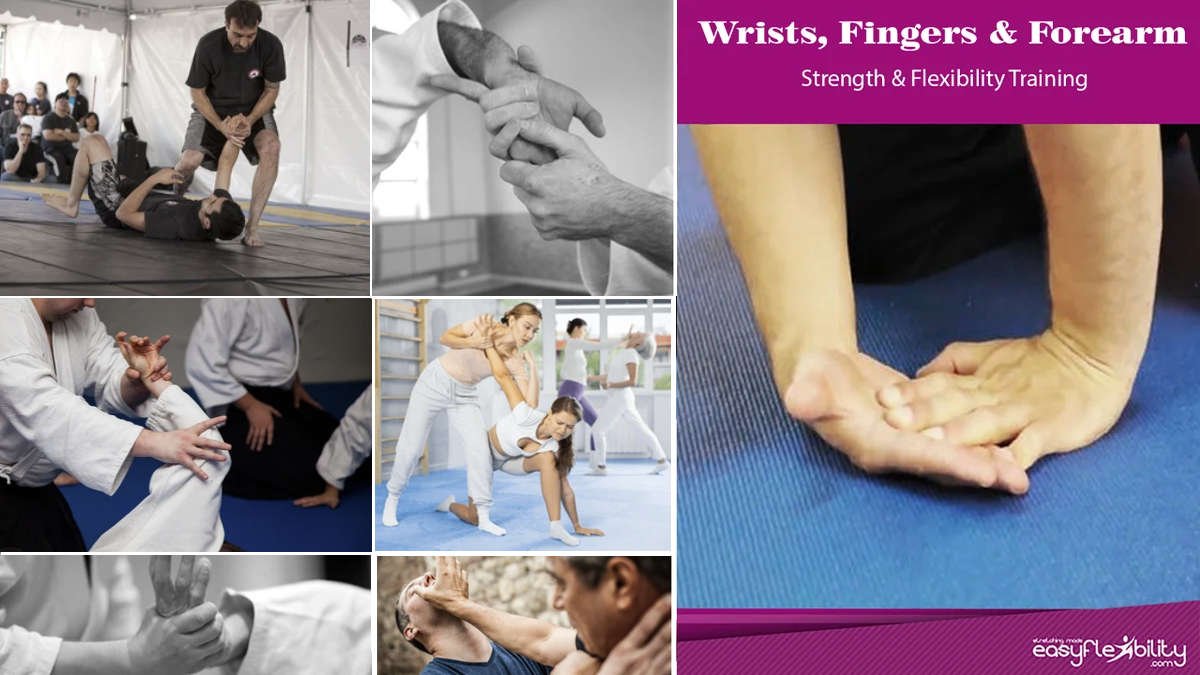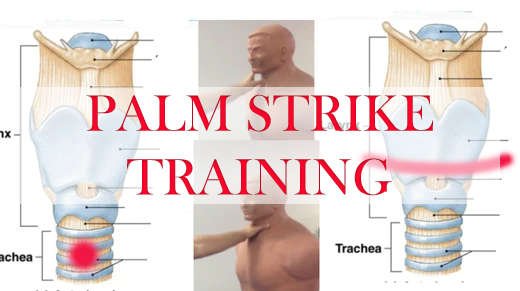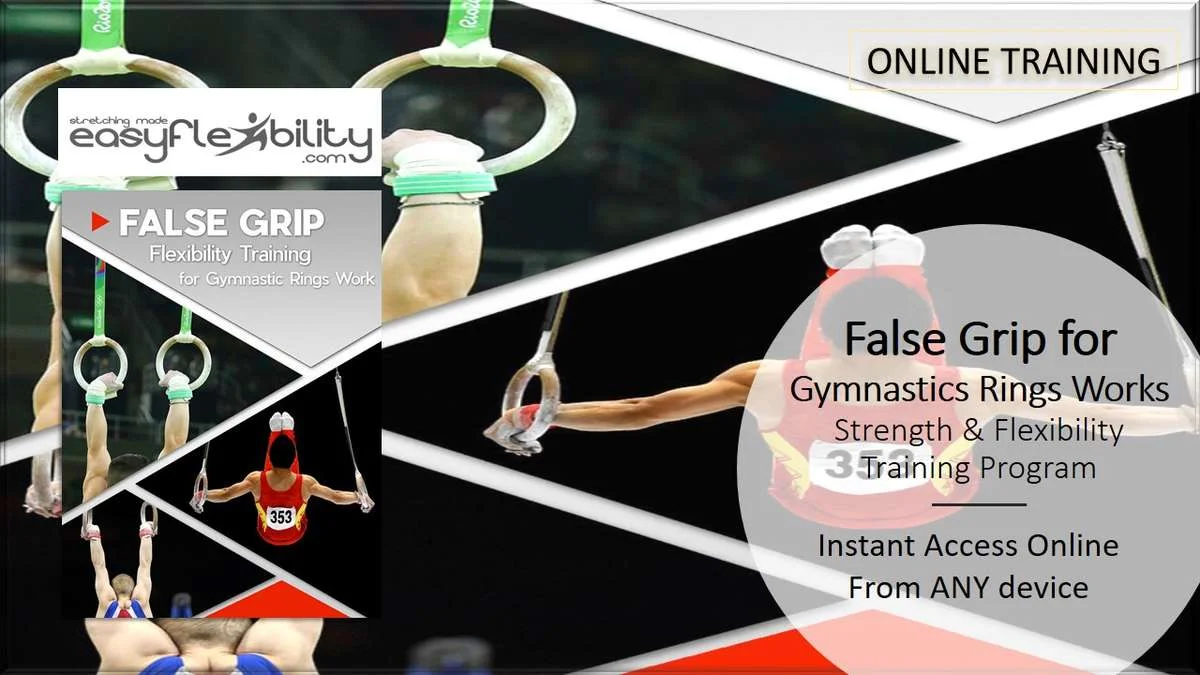The wrist joint lock: Strength and flexibility conditioning for better performance and injury prevention.
The wrist joint lock: Strength and flexibility conditioning for better performance and injury prevention.
1 VERY IMPORTANT
AND PAINFUL LESSON
I LEARNED
IN MY MARTIAL ARTS TRAINING!
"My own personal interest in developing strength and flexibility in the joints was specifically as a defense against locks and also as injury prevention. It all started when an overzealous beginner student who was doing a self defense move, used full force on my wrist and injured it."
Joint lock wrist flexibility how important is it in a joint lock?
If you practice a martial arts style which involves joint locks, a style such as jujitsu, aikido, hapkido and so on. Strength and flexibility in your joints, and of course, active and passive range of motion training in your joints will help quite a lot for injury prevention and performance.
It is important to note that some joints cannot develop flexibility beyond the normal range of motion unless someone decides to stretch the ligaments. And this is not something that we will talk about here. But while you can increase your wrist flexibility quite a bit, your fingers and even in your shoulder joint, if somebody puts you into an arm bar, leg bar, knee bar you cannot get more extension of the elbow or extension of your knee than there is. I'm putting this out there for people to realize that with some joints is just not possible.
It is important to note that some joints cannot develop flexibility beyond the normal range of motion unless someone decides to stretch the ligaments. And this is not something that we will talk about here. But while you can increase your wrist flexibility quite a bit, your fingers and even in your shoulder joint, if somebody puts you into an arm bar, leg bar, knee bar you cannot get more extension of the elbow or extension of your knee than there is. I'm putting this out there for people to realize that with some joints is just not possible.
Joint Lock: Wrists strength and flexibility development as self defense and injury prevention.
My own personal interest in developing strength and flexibility in the joints was specifically as a defense against locks and also as injury prevention. It all started when an overzealous beginner student who was doing a self defense move, used full force on my wrist and injured it.
At that time, the closest thing that we did to wrist conditioning, either flexibility or strength, was doing back of the hand pushups. Nothing else. While I was waiting for my wrist to heal. I was hanging out with one of my friends who was taking lessons in a gymnastics school. He was a martial artist, but he wanted to learn how to do gymnastics skills for the competition purposes. And I witnessed some of the gymnasts in his school having freakishly crazy wrist flexibility. Not just extension of the wrist, which is when you put your palm on the floor, but also the flexion of the wrist, which is when you put back of the hand on the floor. And that got me thinking.
What if I have such a crazy flexibility in my wrist, that if someone tried to do a wrist lock on me, by moving my wrist into flexion, in other words, kind of pushing my palm toward my forearm, I would be able to actually come out of that lock simply because they wouldn't expect that much flexibility. They would expect the range of motion to end and the pain to set in maybe at 90 degrees or something like that, but not at 120, 130, 140 or more degrees. I wanted to test that theory right there on the spot by asking these students if I can lock their wrist to see if they feel any pain or not and how much I can actually lock the wrist. But I was concerned that I might hurt them and it's not going to be a good thing.
Although I had a hunch that this flexibility would be extremely helpful to prevent the person doing the lock from doing it successfully. So while my right wrist was healing, I decided to start training my left wrist. The flexibility and strength exercises were primitive. Nothing like something that I know and practice now. But I knew some basic concepts. And those are the concepts that I followed. After a while I began to develop flexibility and strength in my wrist. Although I believe it could have happened a lot faster, have I known what I know now. Eventually, my right wrist healed, and I began to train my right wrist as well, even if it did lag behind.
At that time, the closest thing that we did to wrist conditioning, either flexibility or strength, was doing back of the hand pushups. Nothing else. While I was waiting for my wrist to heal. I was hanging out with one of my friends who was taking lessons in a gymnastics school. He was a martial artist, but he wanted to learn how to do gymnastics skills for the competition purposes. And I witnessed some of the gymnasts in his school having freakishly crazy wrist flexibility. Not just extension of the wrist, which is when you put your palm on the floor, but also the flexion of the wrist, which is when you put back of the hand on the floor. And that got me thinking.
What if I have such a crazy flexibility in my wrist, that if someone tried to do a wrist lock on me, by moving my wrist into flexion, in other words, kind of pushing my palm toward my forearm, I would be able to actually come out of that lock simply because they wouldn't expect that much flexibility. They would expect the range of motion to end and the pain to set in maybe at 90 degrees or something like that, but not at 120, 130, 140 or more degrees. I wanted to test that theory right there on the spot by asking these students if I can lock their wrist to see if they feel any pain or not and how much I can actually lock the wrist. But I was concerned that I might hurt them and it's not going to be a good thing.
Although I had a hunch that this flexibility would be extremely helpful to prevent the person doing the lock from doing it successfully. So while my right wrist was healing, I decided to start training my left wrist. The flexibility and strength exercises were primitive. Nothing like something that I know and practice now. But I knew some basic concepts. And those are the concepts that I followed. After a while I began to develop flexibility and strength in my wrist. Although I believe it could have happened a lot faster, have I known what I know now. Eventually, my right wrist healed, and I began to train my right wrist as well, even if it did lag behind.
I had enough range of motion to simply slip my hand out of his grip
Eventually I felt like I was ready to do an experiment on myself. I chose my left wrist because it was more flexible. I asked one of the people I was training with to try to lock my wrist and take me down. In other words, in a supinated position to turn my fingers up and my palm toward my forearm and from there to pull me down to the ground. He did, and he brought my wrist into flexed position and when he tried to pull me down, I had enough range of motion to simply slip my hand out of his grip.
Subconsciously, he was so sure that my hand is secure in his hands that he didn't even try to hold my hand. All he was doing is pushing with his thumbs into my knuckles and pulling with his fingers into my wrist. But he didn't try to squeeze and hold my hand, so I easily slipped it out.
Subconsciously, he was so sure that my hand is secure in his hands that he didn't even try to hold my hand. All he was doing is pushing with his thumbs into my knuckles and pulling with his fingers into my wrist. But he didn't try to squeeze and hold my hand, so I easily slipped it out.
What is the significance as a defense to wrist joint lock?
The significance is that if someone ever tries to do this to you in a real confrontation, which is extremely unlikely, you will have an opportunity to recover your arm from the attacker without getting injured.
At the same time, what is a lot more likely is when someone is performing a joint lock on you who is not well trained, doesn't have good control, or simply is using excessive force, thinking that it's an actual self-defense situation where it's just training, you have an opportunity to escape an injury.
If I had that level of flexibility, I definitely would not have gotten injured. On a side note, another excellent reason to have such a good wrist flexibility combined with strength, is an ability to perform a good palm strike or wrist strike.
Palm strikes are a lot more common than wrist strikes. I'm not advocating for or against using them, but if you do use them, having good wrist strikes and flexibility will protect your wrist and at the same time, of course, improve the strike, because you will not have to adjust your angle to compensate for lack of flexibility in your wrist.
Now, while both strength and flexibility in the wrist and forearm are important for both defense and offense. Strength in the fingers, wrist and forearms might be seen a little bit more than offensive quality, especially if you do use small joint manipulations for self-defense or in training. Of course, having grip strength in different positions and finger strength will help quite a bit for throws and takedowns and locks of any joint where gripping a part of a person's body or clothes is involved.
We have four programs for the wrist and forearm. We have a basic Wrist & Forearm Flexibility program for the wrist, which goes into all the muscles that flex and extend.
At the same time, what is a lot more likely is when someone is performing a joint lock on you who is not well trained, doesn't have good control, or simply is using excessive force, thinking that it's an actual self-defense situation where it's just training, you have an opportunity to escape an injury.
If I had that level of flexibility, I definitely would not have gotten injured. On a side note, another excellent reason to have such a good wrist flexibility combined with strength, is an ability to perform a good palm strike or wrist strike.
Palm strikes are a lot more common than wrist strikes. I'm not advocating for or against using them, but if you do use them, having good wrist strikes and flexibility will protect your wrist and at the same time, of course, improve the strike, because you will not have to adjust your angle to compensate for lack of flexibility in your wrist.
Now, while both strength and flexibility in the wrist and forearm are important for both defense and offense. Strength in the fingers, wrist and forearms might be seen a little bit more than offensive quality, especially if you do use small joint manipulations for self-defense or in training. Of course, having grip strength in different positions and finger strength will help quite a bit for throws and takedowns and locks of any joint where gripping a part of a person's body or clothes is involved.
We have four programs for the wrist and forearm. We have a basic Wrist & Forearm Flexibility program for the wrist, which goes into all the muscles that flex and extend.
Wrists & Forearms Training
The Wrist and forearm flexibility program is often forgotten and neglected compared to large muscles such as the hamstrings, adductors and even Lats or hip flexors. In certain disciplines having a strong flexible wrist means the difference between getting injured or staying on top of your game.
How is our Wrist, Forearm and Finger Flexibility program different? With this program you can:
- ✅**Transform Your Wrist, Forearm, and Finger Flexibility** with our on-demand, pre-recorded video program, designed to move beyond traditional relaxed stretches.
- ✅**Target Every Muscle** with our specialized approach that addresses the many smaller muscles often overlooked by standard stretching routines.
- ✅**Comprehensive Coverage** ensures no muscle is neglected, focusing on both superficial and deeper muscles for complete hand and forearm flexibility.
- ✅**Innovative Techniques** employ two or more actions of each muscle against each other, creating space to quickly enhance length and range of motion.
- ✅**Avoid Stretch Reflex Pain** with our unique system, designed to bypass the discomfort typically associated with stretching, making your flexibility journey pain-free.
- ✅Our approach is tailored to ensure you achieve the best results in your flexibility journey, focusing on precision and effectiveness.
We have a structured flexibility program focusing more on the strength with a bow staff or bar.
Zejax Wrist, Forearm and Fingers Program
Regardless of what sport you play, what activity you do (unless it's soccer), your hands, wrists, forearms and finger strength can and does make or break you game. In order to succefully train your hand strength a large number of implements are needed. Gripplers, plates, rolling stick, and the list goes on. Zejax has changed all that.
Just one piece of versatile equipment, Zejax replaces dozens of weights, cables, bands and grippers. We guarantee you will be shocked, by how strong your fingers, wrists and forearms will become after just weeks of Zejax training.
We have a specific palm strike program for strength and flexibility of the wrist for the palm strike.
Palm StrikePoint of Impact Strength and Flexibility Development
This program teaches you how to develop flexibility and corresponding strength in the wrist and forearm to properly and safely position the hand for the palm strike.
To get full power from the straight palm strike, one needs to keep the forearm in line with the target. This of course calls for at least a 90 degree angle in the wrist. This program teaches you how to develop flexibility and corresponding strength in the wrist and forearm to properly and safely position the hand for the palm strike.
And we have false grip program, which focuses more on flexion of the wrist which is opposite to the palm strike position. Granted, this is for gymnasts, but Martial Artists can benefit from it quite a lot as well.
False Grip Flexibility Training for Gymnastics Rings Work
False Grip is a gripping technique used in gymnastics and recently in other forms of bodyweight training, such as the "Street Workout".
Zaichik Stretches separate out each extensor of the wrist and fingers, and stretches them kinesiologically. Action vs action of the same muscle is used, this allow the stretch to be fast, safe and pain free. The results are obtained without the pain of the stretch reflex.

About the Author:
Paul Zaichik is an Exercise Science Expert, author of multitude of books, and the creator of Zaichik Stretching Technique (formely known as Kinesiological Stretching Technique). His speciality is flexibility training as well as body weight conditioning. His innovative method is designed to have maximum carry over into specific athletic techniques. Paul is the author of books and DVD’s on the topic of flexibility, martial arts and bodyweight training. Over the years, Paul Zaichik has worked with a variety of individuals including athletes, entertainers, and military personnel. His ElasticSteel Method of Athletic Conditioning programs, EasyFlexibility Programs and Zaichik Stretching Techniques are used world wide by both professional and amateurs with great success.
© ElasticSteel Corp., EasyFlexibility, Paul Zaichik, et. El., 2022. No part of the materials available through ElasticSteel.com, EasyFlexiiblity.com, site may be copied, photocopied, reproduced, translated or reduced to any electronic medium or machine-readable form, in whole or in part, without prior written consent of Paul Zaichik EasyFlexibility.com, Elasticsteel.com.. Any other reproduction in any form without the permission of Paul Zaichik EasyFlexibility.com, Elasticsteel.com is prohibited. All materials contained on this site are protected by United States copyright law and may not be reproduced, distributed, transmitted, displayed, published or broadcast without the prior written permission of Paul Zaichik, EasyFlexibility.com, Elasticsteel.com.






Leave a comment